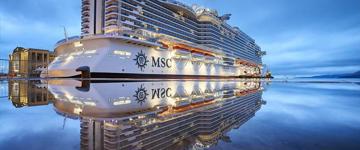Colosseum
The Flavius amphitheatre is the biggest and most imposing in the Roman world, but is also the most famous monument in Rome and is known as the "Colosseum" or "Coliseum". Started by Emperor Vespasian of the Flavia family, it was opened by his son Titus in 80 A.D.
The highly ostentatious opening ceremony, lasted one hundred days during which people saw great fights, shows and hunts involving the killing of thousands of animals (5000 according to the historian Suetonius). For the opening, the arena space was filled with water for one of the most fantastic events held in Roman times, naumachias – real sea battles reproducing great battles of the past.
The Coliseum is one of the most imposing ancient structures. Imagine it all white, completely covered in splendid travertine stone slabs. It is elliptic in shape in order to hold more spectators. It had four floors; the first three had eighty arches each; the arches on the second and third floors were decorated with huge statues.
What we see nowadays is just the skeleton of what was the greatest arena in the ancient world. Three-fifths of the outer surrounding brick wall are missing. In the Middle Ages, when no longer in use, the Colosseum was transformed into an enormous marble, lead and iron quarry used by Popes to build Barberini Palace, Piazza Venezia and even St. Peter's.
Threatened with demolition by Sixtus V for town-planning reasons, it was declared a sacred monument dedicated to the Passion of Christ by Benedict XIV, placing a cross on a pedestal, as a symbol of the sufferings of all Christian martyrs. This cross is still the starting point for the Stations of the Cross on Good Friday. Since then, it has become an object of worship for Christians and was protected from further destruction and ruin; in fact, Popes after that restored and consolidated it.
For a tourist today, seeing the Coliseum means, as Charles Dickens wrote, "seeing the ghost of old Rome floating over the places its people walk in".


